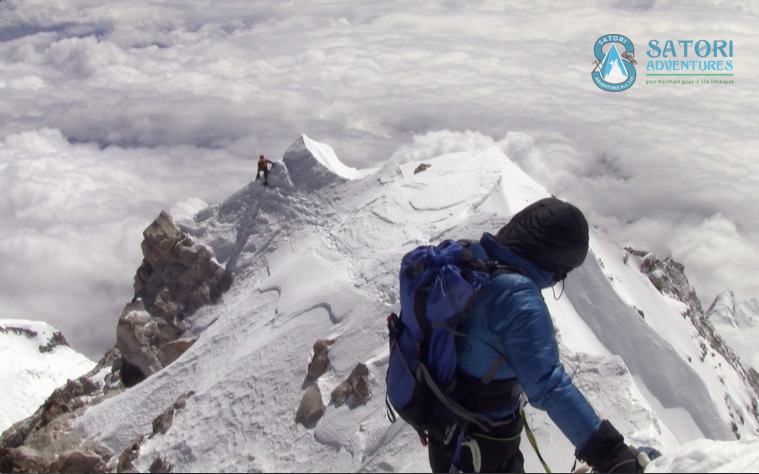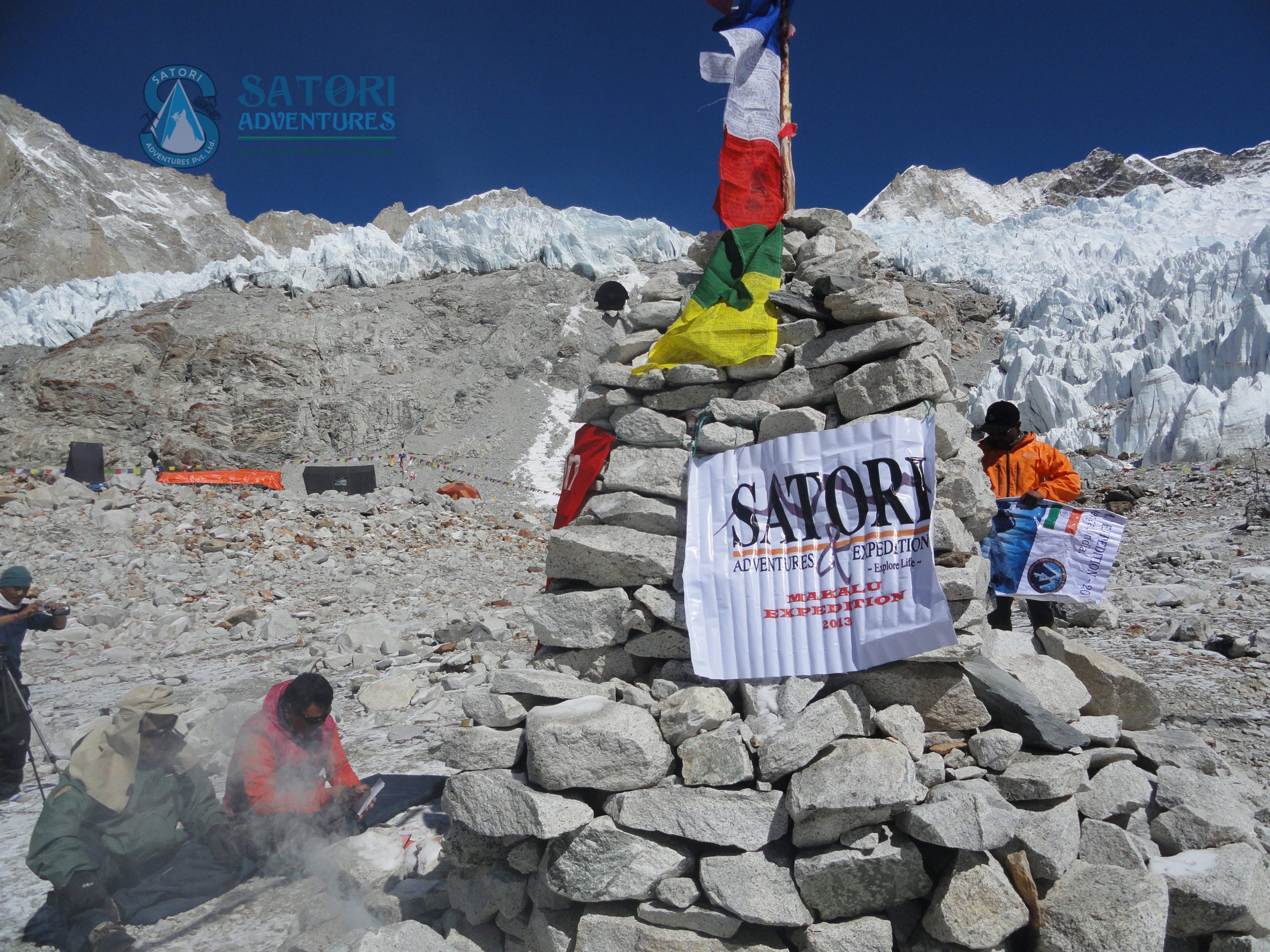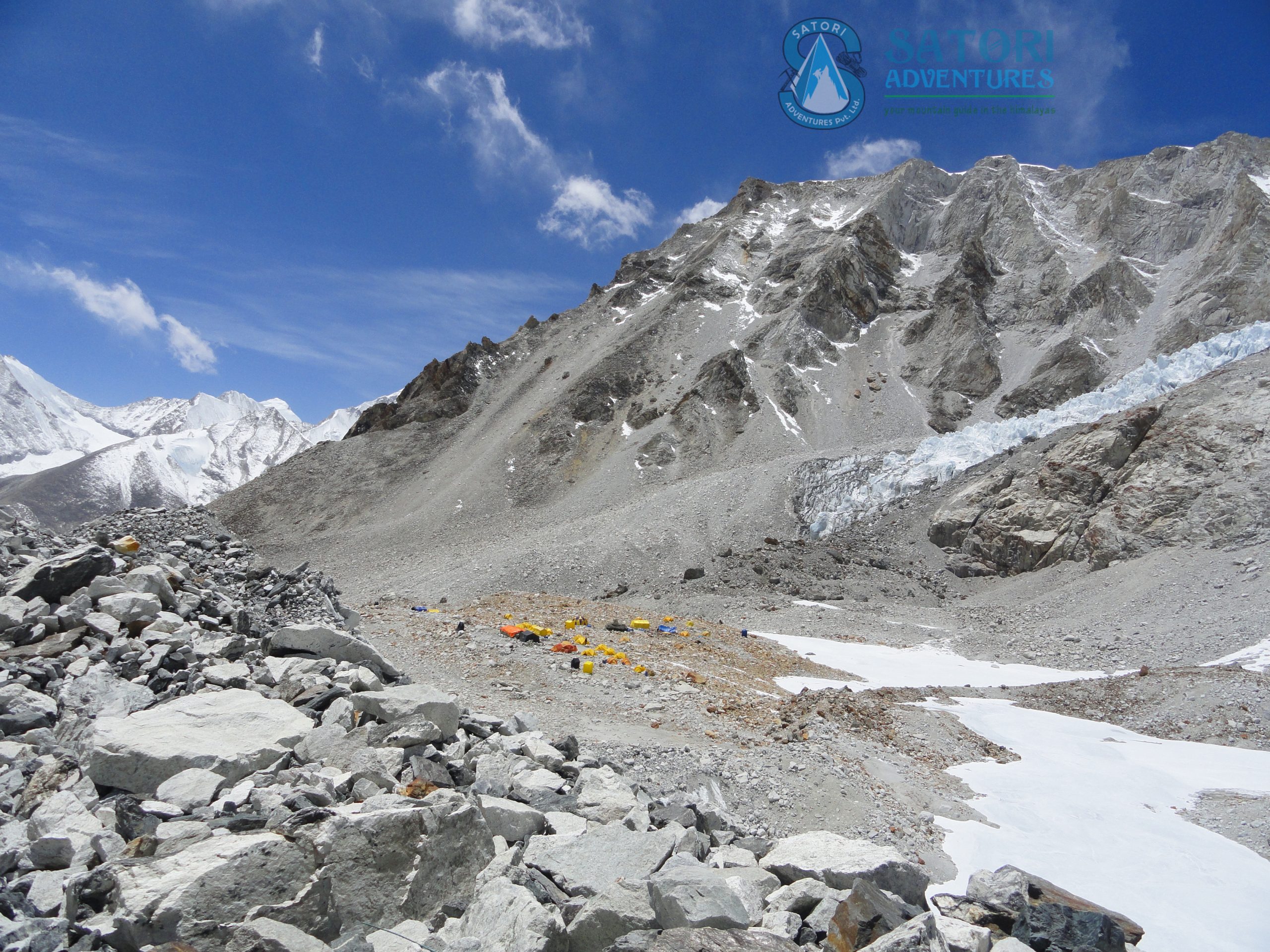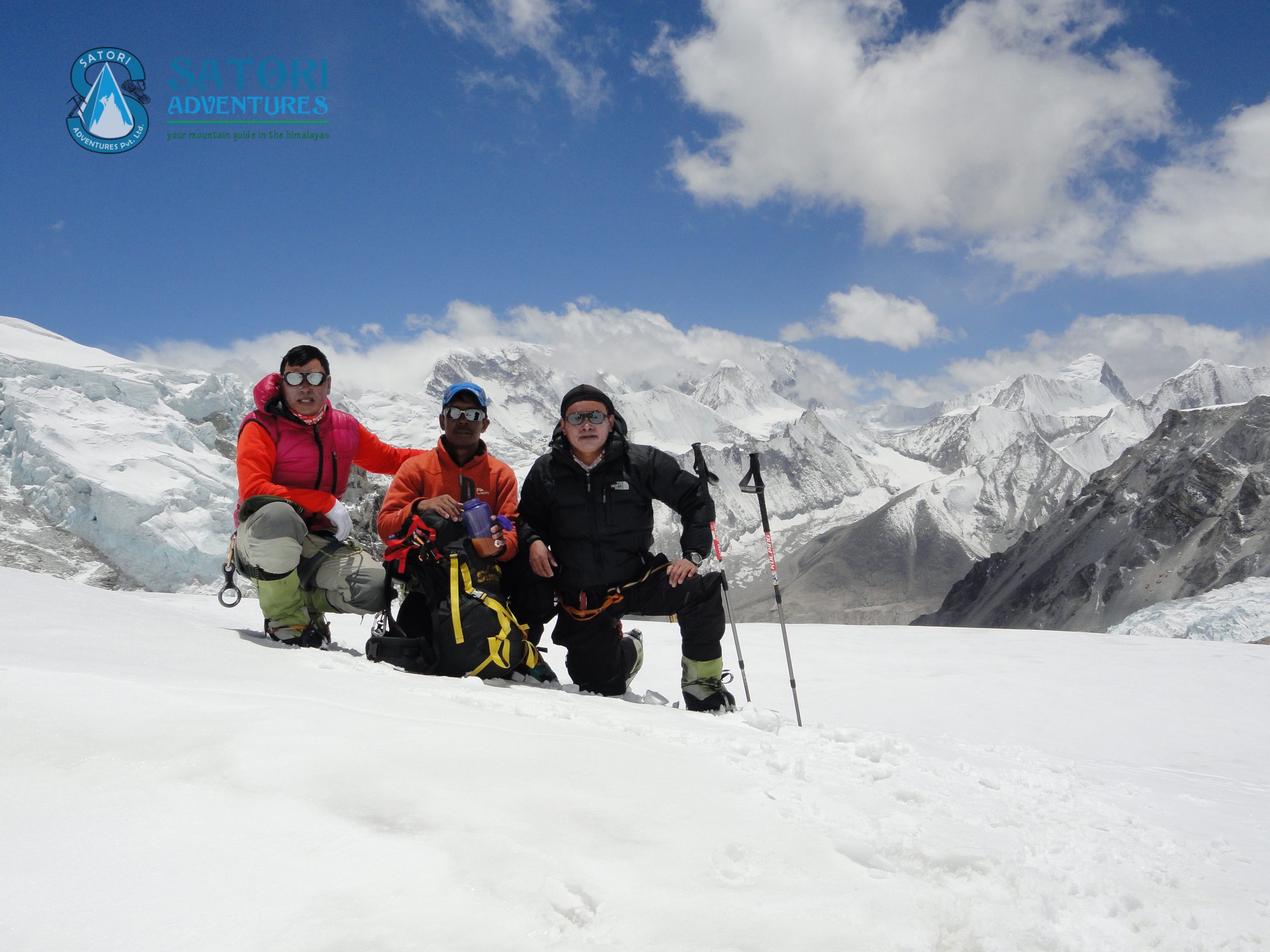Satori Adventures found that many mountaineers choose to climb the wrong technical mountain because of a lack of proper information before they decided. Accurate information is really important for you so you can fit the mountain as per your experience, stamina, and interests. When a climber read the wrong information about the technical parts of any mountain through internet/ websites, the climber will make the wrong decision where risk and unsuccessful results.
We found that many climbers get information from search engines, blogs, and social media regarding how technical is Mount Makalu climbing. Mountaineering is difficult. How easy or how difficult is Makalu expedition in comparison with other 8000m or the peak of similar heights. It also depends on the climber’s previous climbing experiences, physical fitness, weather, age, quality of personal climbing equipment, experience of climbing Sherpa guide, reputation and background of the operator, and climbing season as well.
Mt. Makalu is one of the hardest and technical eight-thousander in the world to climb. Primarily between Camp II to Camp III, and final ascent of the summit pyramid involves technical rock climbing with some 400m of knife ridge ascent route.
The approach to base camp on its south side is through the Barun region of Nepal leading up to Sarsing Kharka Glacier. It starts with the flight to Tumlingtar from Kathmandu and the beautiful trek via Num, Yangle Kharka, Langmale Kharka to the Makalu Base Camp and Advance base Camp finally. The Advance Base camp of Makalu is also called Hillary Base camp at 5,600m /18,373 ft. This pre-climbing period of trekking is of 10-12 days including acclimatization period.

The Makalu Advance Base camp is on rocks so is hotter than other base camps. As the base camp is in front of the mount Makalu, the summit is almost invisible because of rays of sun in the morning and visible shining in the latter afternoon and evening. It takes about 5 hours to reach the Advance Base camp from Makalu Base camp. The first two hours is easy and light, and the rest of the three hours is difficult because of snow and rocks.
After two or three days of rest and preparation at the Makalu base camp, your climbing Sherpa guides take you up to the Camp I and Camp II for acclimatization. On average, it takes approximately four and half an hour for you in the first time to reach Camp I from the Advance base camp.
From camp 1, it takes about three hours ascends to reach camp 2, if you are a climber with average stamina. It depends on your acclimatization, weather condition, physical fitness, and walking pace. After an hour of snow uphill in 25-30 degrees ice wall slope, and another 30 minutes of the rough climb you reach sections which pose challenges for climbers. The journey between Camp-1 and Camp-2 is considered being a moderate part of the Lhotse expedition. There is one Ice Crevasse in this Lhotse climbing route. Climbing rope fixing team fixes the ladder 1 places (it depends on climbing season and year) to cross these crevasses. The ladder is in flat Steep in between 2.5-3 meters’ distance of Crevasse.
Mt. Lhotse camp 2 and Everest camp 2 is also located at the same place and point. Satori adventures have kitchen and dining arrangements at camp two where we are able to provide fresh cooked breakfast, lunch, and dinner including all kinds of hot drinks. There is a totally fixed-rope route line between camps one and 2. Camp II is located at the height of 6,400m/20,997ft., which is also a safe location as the campsites of the Everest south col wall. There are totally Small and large sizes of stones and if there is snowfall then-new snows at the Lhotse Camp-2, climbing Sherpa’s guides fix the Dining tent, kitchen tent and member tent here to provide more quality of service.

The Mount Lhotse climbing from Camp 2 (C2) to Camp 3 (C3) is safe and comparatively easy to climb. It takes about three hours for average stamina climbers to climb this section. After two hours of walking above the snow slope about 15-20 degrees, you will arrive at the rope fixing section was about 100 m high vertical Ice slope below C3 and takes about 30 minutes to climb. This place is very steep with snow and ice. Since there are many climbers to climb Mt. Everest and Lhotse in the spring, not all climbers have enough space for Siberia. For the same reason, the third base should be made by clearing the snow and breaking the ice. Lhotse Camp-3 is pitched at an elevation of 6,900m / 22,638 ft.
From Camp 3, it takes about four and a half hours climbing to reach camp 4 (C4) for average stamina climbers. This duration can fluctuate depending upon how many climbers are there at a time to carry out their climbing. If there are many climbers ascending and descending and traffic is bad, then it may take 6-8 hours because the climbing route from the advance base camp of Mount Everest and Mount Lhotse to the fourth camp (just below camp four) is the same for both the mountains. About 380 climbers on Mount Everest and 100 climbers on Lhotse and the same number of Sherpa guides strive for a successful ascent each spring season. The climbing route is a more vertical snow wall in this part, and with a limited Anker that can be used to either ascend or descend by one climber at a time in Yellow band. Lhotse camp–4 is also set up above the Ice. The Lhotse 4th base camp is also steep and ice-fearing, so space should be made and placed on the snow. Lhotse Camp 4 fixed about height of 7,925m /25,984 ft.
The Lhotse climbing route from the fourth camp to the mount Lhotse summit is smooth and safe except in Couloir below the summit where you have to walk and spent 6 hours to ascend and 4 hours to descend. We advise climbers to bring and wear a helmet as there is a greater risk of small rocks and ice fragments falling from the summit in this area. As per our previous experience, almost 90% of climber use Oxygen in this summit part. That might be the reason that climbers feel easy to ascend. You may start at about 23:00 Pm to 00:00 am for the Lhotse summit target by 07:00 to 08:00 am. That means the distance between Camp 4 to Summit of Mt. Lhotse is an average of 08-09 hours of climbing distance—not fixed to any climber and it’s all approximate to the climber with average climbing stamina. It takes about 4-6 hours of descent from the summit to Camp four.

About one and half an hour ascending from the Lhotse Camp 4 you reach the vertical snow wall climbing place, which is about 45-50m to even 60 degrees of slope gorge between two hills. After crossing this vertical snow wall with fixed static rope, you ascend six to seven-hour further. Almost from here to just below the real Summit of Lhotse 8516m/27940ft. approximately, it takes about 30 minute’s average pace of 50 degrees of the vertical route to stand on the top of the mount Lhotse summit at a height of 8516m/27940ft. The rope fixing team always fixes the rope line from C4 to summit completely for safety reasons. The space on the Mt. Lhotse summit point is really narrow even hard to accommodate 2-3 climbers together. This is why sometimes there is long traffic on summit queues.
If you are a climber with good stamina, then you can descend all the way down to Camp 3 or even Camp 2 the same day from the summit. If you are a climber of average stamina, then you can descend to Camp 4 and then next day to Camp 2 and to the Advance Base camp the subsequent day.


